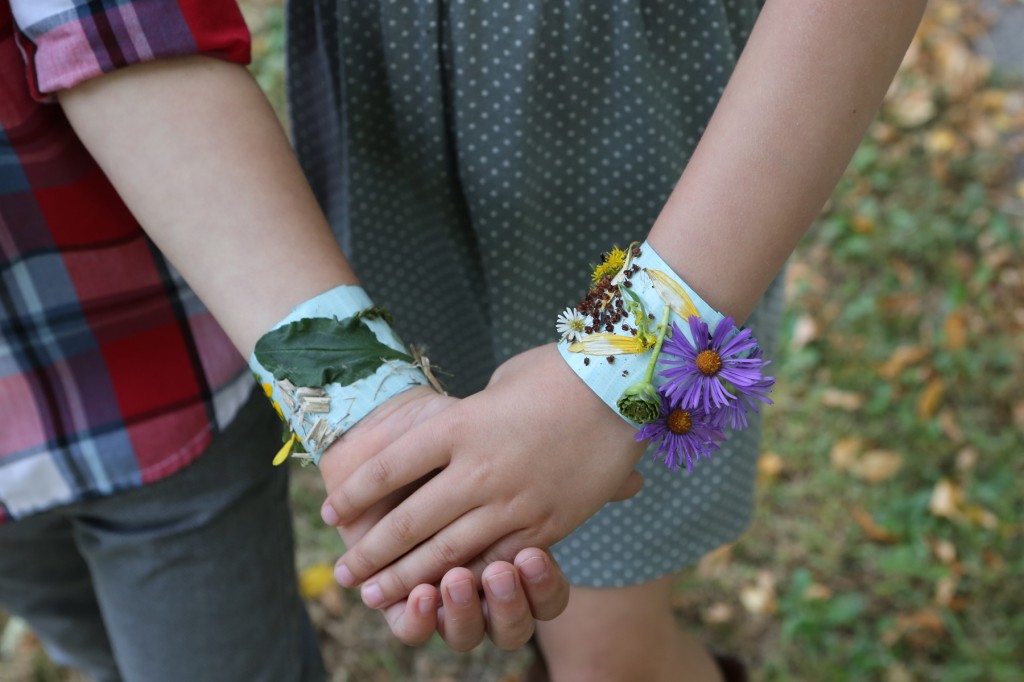Tag: environment’
Nature Walk Bracelets
- by KitchenPantryScientist
I can’t get over how young my kids look in this post, which I first published a few years ago. This is a great science/art crossover project and one of these bracelets would make a fantastic Mother’s Day gift! Just bring an extra bag along and pick up some extra flowers, petals, leaves and seeds for mom’s bracelet. You can assemble it when you get home. Just leave one edge leaf-free so you can put it on her wrist!

Spring has finally arrived, and a fantastic way to enjoy it is to take a nature walk. While you walk, watch for signs of spring and assemble your discoveries on your wrist with a nature walk bracelet. It’s always a good idea to bring a few bags along too- one for larger treasures (like pine cones) and one for trash. You can study nature and clean up the environment at the same time!
All you need is duct tape. Cut the tape so it fits comfortably around your wrist and tape it around like a bracelet, sticky side out. Take a walk in a park or down your own street and look for small leaves, acorns, flowers and other natural artifacts to adorn your wristlets. Be sure to watch for birds while you walk! There are a number of great apps you can use to identify what species of plants you find, including Leafsnap!

We wore our bracelets all afternoon and several people mistook them for real jewelry. My oldest daughter thought they looked even prettier as the leaves and flowers wilted and flattened out on the tape.
 Enjoy!
Enjoy!
We are the Whales
- by KitchenPantryScientist
Whale hunting has been in the new a lot recently, but it now appears that the biggest threat to these intelligent, majestic animals is no longer whalers’ harpoons.
I read this morning in the Star Tribune that “Sperm whales, feeding even in the most remote reaches of Earth’s oceans, have built up stunningly high levels of toxic and heavy metals.” Most of these contaminants have been introduced into the ocean by humans of course. The article goes on to talk about how our food supply is being threatened by our poisoned oceans and that seafood is a primary source of protein for over 1 billion people. Do you eat fish?
Apparently, high concentrations of these poisons collect in these whales because they are at the top of the food chain. That means they eat fish and squid that have eaten smaller animals, which have eaten yet smaller animals and plants and so on. Humans are also at the top of the food chain, and although we don’t only eat contaminated fish, we eat many other plants and animals that are exposed to heavy metals, pesticides and herbicides. Both whales and humans nurse their young, passing contaminants from mother to baby. (That beautiful piece of wild salmon may not be as pristine as you’ve convinced yourself that it is. Like it or not, our bodies are full of toxins too.)
What’s happening to the whales is happening to us. The difference is that the whales are not the ones polluting the world.
Look at the Gulf. Looks at our sick oceans. Go read “The Lorax.”
We have to save the whales to save ourselves.
